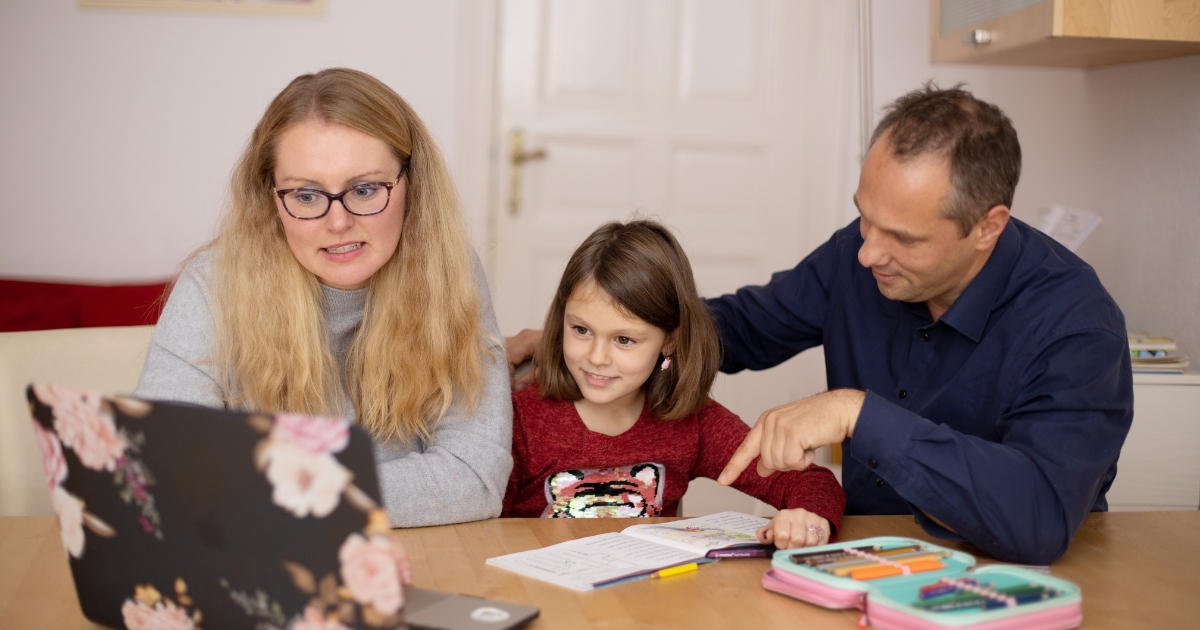Modern life moves at breakneck speed, with parents juggling work demands while children navigate packed academic schedules. Yet amid this chaos, families who choose to homeschool discover something remarkable: the profound impact of shared learning experiences. Family learning activities transform education from a solitary task into a collaborative adventure that strengthens bonds while building knowledge.
When families embrace learning together, they create more than academic success. They build lasting relationships, develop shared interests, and cultivate lifelong curiosity. This approach to education recognizes that learning happens everywhere, not just during designated study hours. From kitchen science experiments to nature walks that become biology lessons, family learning activities weave education seamlessly into daily life.
The benefits extend far beyond test scores or curriculum completion. Families who learn together report stronger communication, increased trust, and deeper understanding of each child’s unique learning style. Children develop confidence knowing their parents are invested partners in their educational journey, while parents gain insight into how their children think and process information.
The Foundation Of Family Bonding Through Shared Learning
Learning together creates unique opportunities for connection that traditional schooling often misses. When parents and children explore new concepts side by side, they share moments of discovery, struggle, and triumph that forge lasting memories. These shared experiences become the foundation for deeper family relationships.
Family learning activities naturally level the playing field between parents and children. A parent might excel at explaining historical events while their child demonstrates superior tech skills during a coding lesson. This mutual exchange of knowledge and assistance builds respect and understanding between family members. Children see their parents as learners too, making mistakes and celebrating breakthroughs just like they do.
The informal nature of family learning removes many barriers that can hinder connection. Without the pressure of grades or formal assessments, family members can focus on exploration and enjoyment. This relaxed environment encourages questions, creative thinking, and the kind of deep conversations that strengthen family bonds.
Research from the National Center for Education Statistics shows that children whose parents are actively involved in their learning demonstrate better academic outcomes and stronger social-emotional development. When this involvement extends to shared learning experiences, the benefits multiply. Families report improved communication patterns, with children more willing to discuss challenges and celebrate successes with their parents.
The consistency of learning together also creates positive family traditions. Regular activities like weekly nature walks, monthly science experiments, or seasonal history projects become anticipated family events. These traditions provide stability and create a shared family identity centered around growth and discovery.

How Family Learning Activities Strengthen Educational Outcomes
Collaborative learning within families creates powerful educational advantages that extend far beyond what individual study can achieve. When family members tackle subjects together, they bring diverse perspectives and experiences that enrich the learning process. A history lesson about ancient civilizations becomes more engaging when parents share their own travel experiences or cultural knowledge, while children contribute fresh questions and observations.
The multi-generational aspect of family learning provides unique educational benefits. Parents can offer real-world context that textbooks cannot provide, sharing personal experiences that make abstract concepts concrete. When studying economics, parents might explain budgeting through actual household decisions. During science lessons, they can relate concepts to their work experiences or hobbies, making learning immediately relevant and practical.
Family learning activities also address different learning styles within a single session. Visual learners benefit from diagrams and demonstrations that parents create, while kinesthetic learners engage through hands-on experiments and activities. Auditory learners thrive during family discussions and read-aloud sessions. This multi-modal approach ensures that every family member can engage with content in their preferred learning style.
The immediate feedback and support available during family learning sessions accelerates comprehension. When a child struggles with a concept, parents can adjust their teaching approach on the spot, try different explanations, or suggest alternative activities. This responsive teaching creates an optimal learning environment where understanding develops naturally through conversation and exploration.
Family learning also builds metacognitive skills as family members model thinking processes for each other. Parents demonstrate problem-solving strategies while children share their unique approaches to understanding new information. This exchange of thinking strategies helps everyone become more effective learners and develops critical thinking skills that serve them beyond academic subjects.
Building Lifelong Learning Habits Through Family Engagement
When families prioritize learning together, they model the behaviors and attitudes that create lifelong learners. Children absorb the message that education extends beyond school years and formal institutions. They witness parents asking questions, researching topics, and expressing curiosity about the world, which normalizes continuous learning as a natural part of life.
Family learning activities demonstrate that knowledge acquisition can be enjoyable and rewarding. When parents show genuine excitement about discovering new information or mastering new skills, children internalize positive associations with learning. This enthusiasm becomes contagious, creating a family culture where intellectual curiosity is valued and celebrated.
The collaborative nature of family learning also builds important social and emotional skills. Family members learn to:
- Listen actively to different perspectives and ideas
- Ask thoughtful questions that deepen understanding
- Provide constructive feedback and encouragement
- Celebrate each other’s achievements and progress
- Work through challenges together without giving up
- Share resources and support each other’s interests
- Communicate complex ideas clearly and patiently
These skills transfer directly to other areas of life, improving relationships and preparing children for future collaborative work environments. The communication patterns developed during family learning sessions become templates for handling conflicts, making decisions, and supporting each other through various life challenges.
Family learning activities also provide natural opportunities to develop growth mindset thinking. When parents model perseverance through difficult concepts or celebrate mistakes as learning opportunities, children adopt similar attitudes toward challenges. This resilience becomes a cornerstone of lifelong learning, helping family members approach new situations with confidence and determination.
The flexibility inherent in family learning allows for personalized pacing and deep exploration of individual interests. Unlike traditional classroom settings, family learning can follow natural curiosity wherever it leads. A simple question about butterflies might evolve into weeks of studying metamorphosis, visiting butterfly gardens, and creating art projects inspired by wing patterns. This organic approach to learning builds intrinsic motivation and demonstrates that education can be personally meaningful and relevant.
Practical Strategies For Implementing Family Learning Activities
Successful family learning requires intentional planning combined with flexibility to adapt to your family’s unique needs and interests. The key lies in creating regular opportunities for shared exploration while maintaining the spontaneity that makes learning enjoyable. Start by identifying your family’s natural interests and strengths, then build learning activities around these foundations.
Establish consistent learning routines that become anticipated family events. This might include weekly nature walks where you identify plants and animals, monthly cooking sessions that explore different cultures and cuisines, or evening read-aloud times where family members take turns sharing favorite books. The regularity creates stability while the varied content maintains interest and engagement.
Create dedicated learning spaces within your home that welcome family participation. This doesn’t require expensive equipment or extensive renovations. Simple changes like designating a kitchen table as your family laboratory, setting up a reading corner with comfortable seating for multiple people, or creating an art station where everyone can work on projects together can transform ordinary spaces into learning environments.
Successful family learning also requires embracing different roles and expertise within the family. Consider these approaches:
- Rotate teaching responsibilities so each family member leads activities in their areas of strength
- Create learning partnerships where family members support each other’s goals
- Establish family research projects where everyone contributes different skills and perspectives
- Set up peer tutoring systems where siblings help each other with challenging concepts
- Plan field trips and educational outings that everyone can enjoy and learn from
- Use technology tools that facilitate collaboration and shared discovery
Document your family’s learning journey through photos, journals, or digital portfolios. This documentation serves multiple purposes: it creates lasting memories, tracks progress over time, and provides material for reflection and discussion. Children especially enjoy looking back at previous projects and seeing how their skills and knowledge have developed.
Remember that family learning activities should enhance relationships rather than create stress. If an activity isn’t working or family members seem disengaged, adjust your approach or try something different. The goal is building positive associations with learning while strengthening family bonds. Success looks different for every family, and what matters most is finding approaches that work for your unique situation and personalities.
Making An Investment In Family Learning
The investment you make in family learning activities pays dividends that extend far beyond academic achievement. You’re building relationships, creating memories, and establishing patterns that will influence your family for generations. Children who grow up experiencing learning as a shared family value carry this perspective into their own families, creating a legacy of curiosity, connection, and continuous growth.
Family learning activities represent one of the most powerful tools available to homeschooling families. They transform education from an individual task into a collaborative adventure that strengthens relationships while building knowledge and skills. When families prioritize learning together, they create environments where curiosity thrives, challenges become shared adventures, and every day offers opportunities for growth and connection.





